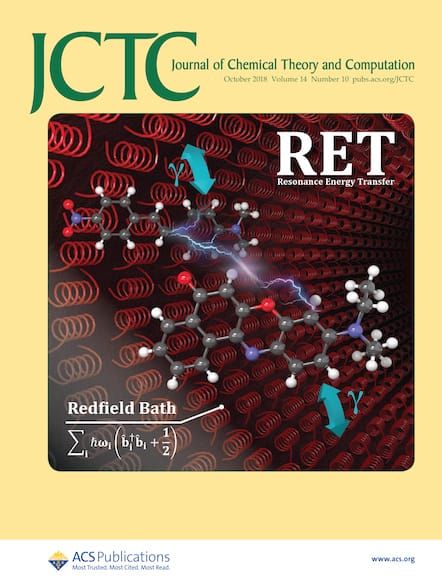基于多体势的新型经典密度泛函理论及其在金属纳米团簇形成中的应用。
IF 5.5
1区 化学
Q2 CHEMISTRY, PHYSICAL
引用次数: 0
摘要
金属纳米团簇由于其特殊的尺寸和性质,在许多领域具有重要的应用价值。金属纳米团簇的关键特征在于它们的多体相互作用,这与传统的成对电位有很大的不同。在这项工作中,我们通过引入加权密度近似(WDA),提出了一种新的多体势的自由能泛函。利用泛函,我们建立了金属簇的动态密度泛函理论(DDFT)。该理论很好地再现了各种金属团簇的熔化温度和核间距离,相应的原子结构也与文献一致。相反,两两电位模型和MFA导致不正确的结果。我们预测规则和不规则多面体团簇,取决于金属原子之间的吸引力强度。结晶过程表现出非线性和不可逆性,但团簇最终采用球状结构。这些发现和提出的模型可能为未来金属纳米团簇的研究提供有价值的见解。本文章由计算机程序翻译,如有差异,请以英文原文为准。
A Novel Classical Density Functional Theory Base on Multibody Potential and Its Application to the Formation of Metal Nanoclusters.
Metal nanoclusters are important materials in many fields due to their special sizes and properties. The key feature of metal nanoclusters lies in their multibody interactions, which differ significantly from conventional pairwise potentials. In this work, we propose a novel free-energy functional for multibody potential by introducing a weighted density approximation (WDA). Using the functional, we develop dynamic density functional theory (DDFT) for metal clusters. The theory nicely reproduces the melting temperature and internuclear distance of various metal clusters, and the corresponding atomistic structure is also consistent with the literature. In contrast, the pairwise potential model and MFA lead to incorrect results. We predict regular and irregular polyhedral clusters, depending on the attractive strength between metal atoms. The crystallization process exhibits nonlinearity and irreversibility, yet the clusters ultimately adopt spherical-like structures. These findings and the proposed model may provide valuable insights into future studies of metal nanoclusters.
求助全文
通过发布文献求助,成功后即可免费获取论文全文。
去求助
来源期刊

Journal of Chemical Theory and Computation
化学-物理:原子、分子和化学物理
CiteScore
9.90
自引率
16.40%
发文量
568
审稿时长
1 months
期刊介绍:
The Journal of Chemical Theory and Computation invites new and original contributions with the understanding that, if accepted, they will not be published elsewhere. Papers reporting new theories, methodology, and/or important applications in quantum electronic structure, molecular dynamics, and statistical mechanics are appropriate for submission to this Journal. Specific topics include advances in or applications of ab initio quantum mechanics, density functional theory, design and properties of new materials, surface science, Monte Carlo simulations, solvation models, QM/MM calculations, biomolecular structure prediction, and molecular dynamics in the broadest sense including gas-phase dynamics, ab initio dynamics, biomolecular dynamics, and protein folding. The Journal does not consider papers that are straightforward applications of known methods including DFT and molecular dynamics. The Journal favors submissions that include advances in theory or methodology with applications to compelling problems.
 求助内容:
求助内容: 应助结果提醒方式:
应助结果提醒方式:


